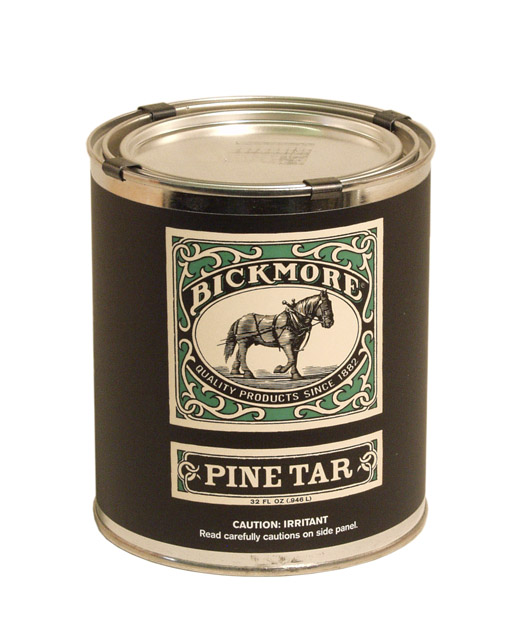


Rosin is a clear golden solid material made from pine sap, not pine wood. Pine tar is not the same as rosin (also called colophony). The charcoal is used for cooking, blacksmithing, or any other purpose that needs a hot, nearly smokeless fire. It is sometimes used as a protective coating on wood buildings, fences, and other outdoor structures. It is used on baseball bats to improve grip and on horses' hooves as a protective dressing. Nowadays, the market for pine tar is small but steady. It was used in the packing material (oakum) that sealed the cracks between planks in ships' hulls. The smoky-smelling pine tar was made in huge quantities in the era of wooden sailing ships. The absence of oxygen during this process prevents the charcoal and tar from burning. The solids that remain are converted into charcoal. The heat turns some chemicals in the wood into a dark, sticky liquid tar that oozes out of the wood. The wood is slowly heated in the absence of oxygen in a process called pyrolysis. Pine tar is often made from the waste roots and stumps of pine trees cut down for lumber. The soap tends to be softer and shorter lived in the bath than a comparable soap without pine tar. The color of a bar of pine tar soap is typically dark brown to almost black, and the lather it makes is also brown. The deeply smoky smell of pine tar can be overwhelming to some people, especially when the soap is freshly made. Probably the biggest reason is pine tar causes the soap batter to thicken very quickly - sometimes in seconds. Pine tar has a notorious reputation among soapers for a number of reasons. The tar that is easiest for handcrafted soap makers to find nowadays is pine tar.
#Pine tar skin
have been used for centuries to control and soothe skin problems such as dermatitis, dandruff, and eczema. Soaps containing tar - pine tar, birch tar, juniper tar, peat tar, coal tar, etc. Pine tar (PT) soap is an interesting soap to make and use. Classic Bells > Soapy stuff > Pine Tar soap


 0 kommentar(er)
0 kommentar(er)
